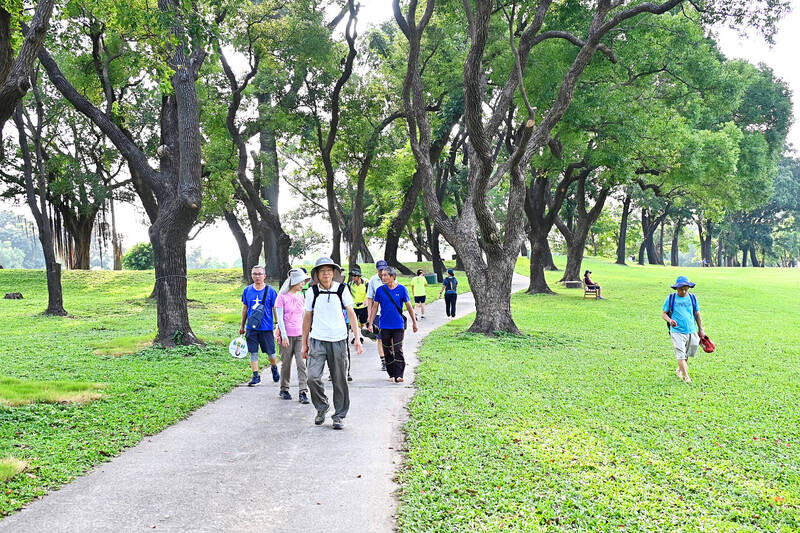The Taipei Times last week reported that the rising share of seniors in the population is reshaping the nation’s housing markets. According to data from the Ministry of the Interior, about 850,000 residences were occupied by elderly people in the first quarter, including 655,000 that housed only one resident. H&B Realty chief researcher Jessica Hsu (徐佳馨), quoted in the article, said that there is rising demand for elderly-friendly housing, including units with elevators, barrier-free layouts and proximity to healthcare services.
Hsu and others cited in the article highlighted the changing family residential dynamics, as children no longer live with parents, leaving the elderly on their own. These demographic changes help drive demand for housing.
“The total number of households steadily increased from 6.35 million in Q1 2011 to 7.31 million in Q4 2022, driven by consistent net household growth,” observed Seoul National University scholar Hyeok Jeong on demography and the housing market in Taiwan. Note that this occurred across a period of falling population growth that eventually became negative toward the end of the period.

Photo courtesy of Singuang Riverside Park
Generally, when there is a higher population of dependents (people who do not work) housing prices decline. This is because disposable incomes are smaller and people find it more difficult to purchase homes. But in Taiwan, according to the paper above, this relation does not hold. Because the economy is growing, credit is plentiful and unemployment is low, demand for housing remains bouyant. Across East Asia, because the aged have money saved, they buy more houses. Additionally, when they have health problems, they tend to dispose of financial assets rather than real estate, scholars note.
A 2023 research paper in the International Journal of Environmental Research and Public Health notes that “there are 1043 elderly welfare institutions, including 42 nursing homes and 1001 long-term care institutions: the demand for elderly housing far outweighs the current supply.”
This idea of “supply” of elderly housing includes both new structures aimed at the elderly and retrofitting of existing residences. At present both existing and new homes are largely designed for nuclear families. Home design targeting the elderly is in its infancy.

Photo: Lee Hui-chou, Taipei Times
Senior citizens drive demand for homes in urban areas close to health care facilities and public transportation, pushing up prices in new housing developments and in urban areas. With their financial clout, senior citizens are going to demand that the political system, as manifested in things like housing and health, cater to them.
Hence, as Taiwan continues to age, the political effects of the intergenerational wealth and property divide will only become more potent and visible to all. Housing costs are already the most obvious site of intergenerational conflict. It is striking how little the large population of house owners cares for the problems of young people unable to purchase a house.
HEALTH CARE
Another key site of conflict will be health care. At some point Taiwan will have to follow Japan and raise fees for visits. A less visible fight, probably between the government and its elderly, will be over shrinking pool of construction workers for small projects, like retrofitting homes, building new homes for the elderly and for carrying out infrastructure projects, along with the skilled technicians needed to install home care and assisted living technologies.
The 10 year Long-Term Care Plan 2.0, announced in 2016 and implemented the following year, is committed to “local services” and “aging in place,” an old policy dating back to the 1990s, intended to keep the elderly in their communities. This meant an expansion of expenditure, from roughly NT$5 billion annually in 2017 to over NT$70 billion projected for next year. It also meant a massive expansion of services for the elderly, a program of the Democratic Progressive Party (DPP) administration. The program offers 17 types of services, from integrated community based care systems to small multi-function care centers.
The Long Term Care Plan assumes that abundant trained staff will exist to run these programs. Where will that staff come from? Who will develop technology for them? Whose taxes will pay for them? Research shows that as the ratio of the working population in a country declines, national GDP falls, and innovation and technology development slow. The working age population, according to National Development Council (NDC) figures, peaked in 2015. By 2037, the NDC calculates, workers aged 45-64 will constitute half the workforce. Workers that age are already planning their retirement, and their sociopolitical interests and the sociopolitical interests of the aged and retired will have a large overlap. They will vote (and consume) in closely related ways.
In 2030 10 percent of the population will be between the ages of 0 and 14, the NDC says. In 2050, when that population is in its 20s and 30s, nearly 40 percent of the population will be 65. The youth vote won’t even matter, swamped by the demands of the older population.
The NDC calculations are based on total fertility rate (TFR, defined as the average number of children a woman has over her reproductive lifetime) and assumptions about lifespan and outmigration. For the “low” birthrate scenario the NDC sets TFR at 0.8, a figure already reached and which will likely fall further. Interestingly, the NDC says in 2023 total outmigration was 226,000. The 2070 numbers assume outmigration of just 16,000. A footnote observes that the 2023 figure was an outlier driven by recovery from COVID restrictions.
INTERGENERATIONAL LIVING
In the fierce intergenerational conflict of the next few decades, Taiwan’s well-educated young will have the option of leaving, and the incentives to do it. By 2050, the NDC calculates, 1.4 workers will be supporting 1 elderly person. Taiwan will hardly be the only developed country in that position. Demand for young people will be great everywhere in the world. Canada, a popular destination for would-be immigrants, already has a TFR nearly as low as Japan’s. What will Taiwan’s young people do then?
Since the government refuses to even think about a rational immigration program, the answer will have to lie in rapidly expanding cheap housing for young people. One solution to Taiwan’s aging population local authorities are exploring is intergenerational living, still in the experimental stage. Intergenerational living is when younger adults with no blood relation live with seniors, providing support and companionship in exchange for reduced rent and rent subsidies. Such programs are now found in all the nation’s municipalities, but they remain small-scale. Expanding this program would provide young singles with affordable living arrangements, something necessary to retain them in Taiwan.
In the midst of providing money to build and refit homes for the elderly, society must even more urgently focus on its young. The government will have to switch funds from its perpetual infrastructure construction programs and sink them into building subsidized single family homes with yards (not apartments, which discourage reproduction), to provide young people with cheap places to live and encourage them to have babies.
Otherwise, future governments will merely be stuffed shirts presiding over long-term national suicide.
Notes from Central Taiwan is a column written by long-term resident Michael Turton, who provides incisive commentary informed by three decades of living in and writing about his adoptive country. The views expressed here are his own.

Taiwan can often feel woefully behind on global trends, from fashion to food, and influences can sometimes feel like the last on the metaphorical bandwagon. In the West, suddenly every burger is being smashed and honey has become “hot” and we’re all drinking orange wine. But it took a good while for a smash burger in Taipei to come across my radar. For the uninitiated, a smash burger is, well, a normal burger patty but smashed flat. Originally, I didn’t understand. Surely the best part of a burger is the thick patty with all the juiciness of the beef, the

The ultimate goal of the Chinese Communist Party (CCP) is the total and overwhelming domination of everything within the sphere of what it considers China and deems as theirs. All decision-making by the CCP must be understood through that lens. Any decision made is to entrench — or ideally expand that power. They are fiercely hostile to anything that weakens or compromises their control of “China.” By design, they will stop at nothing to ensure that there is no distinction between the CCP and the Chinese nation, people, culture, civilization, religion, economy, property, military or government — they are all subsidiary

This year’s Miss Universe in Thailand has been marred by ugly drama, with allegations of an insult to a beauty queen’s intellect, a walkout by pageant contestants and a tearful tantrum by the host. More than 120 women from across the world have gathered in Thailand, vying to be crowned Miss Universe in a contest considered one of the “big four” of global beauty pageants. But the runup has been dominated by the off-stage antics of the coiffed contestants and their Thai hosts, escalating into a feminist firestorm drawing the attention of Mexico’s president. On Tuesday, Mexican delegate Fatima Bosch staged a

Would you eat lab-grown chocolate? I requested a sample from California Cultured, a Sacramento-based company. Its chocolate, not yet commercially available, is made with techniques that have previously been used to synthesize other bioactive products like certain plant-derived pharmaceuticals for commercial sale. A few days later, it arrives. The morsel, barely bigger than a coffee bean, is supposed to be the flavor equivalent of a 70 percent to 80 percent dark chocolate. I tear open its sealed packet and a chocolatey aroma escapes — so far, so good. I pop it in my mouth. Slightly waxy and distinctly bitter, it boasts those bright,